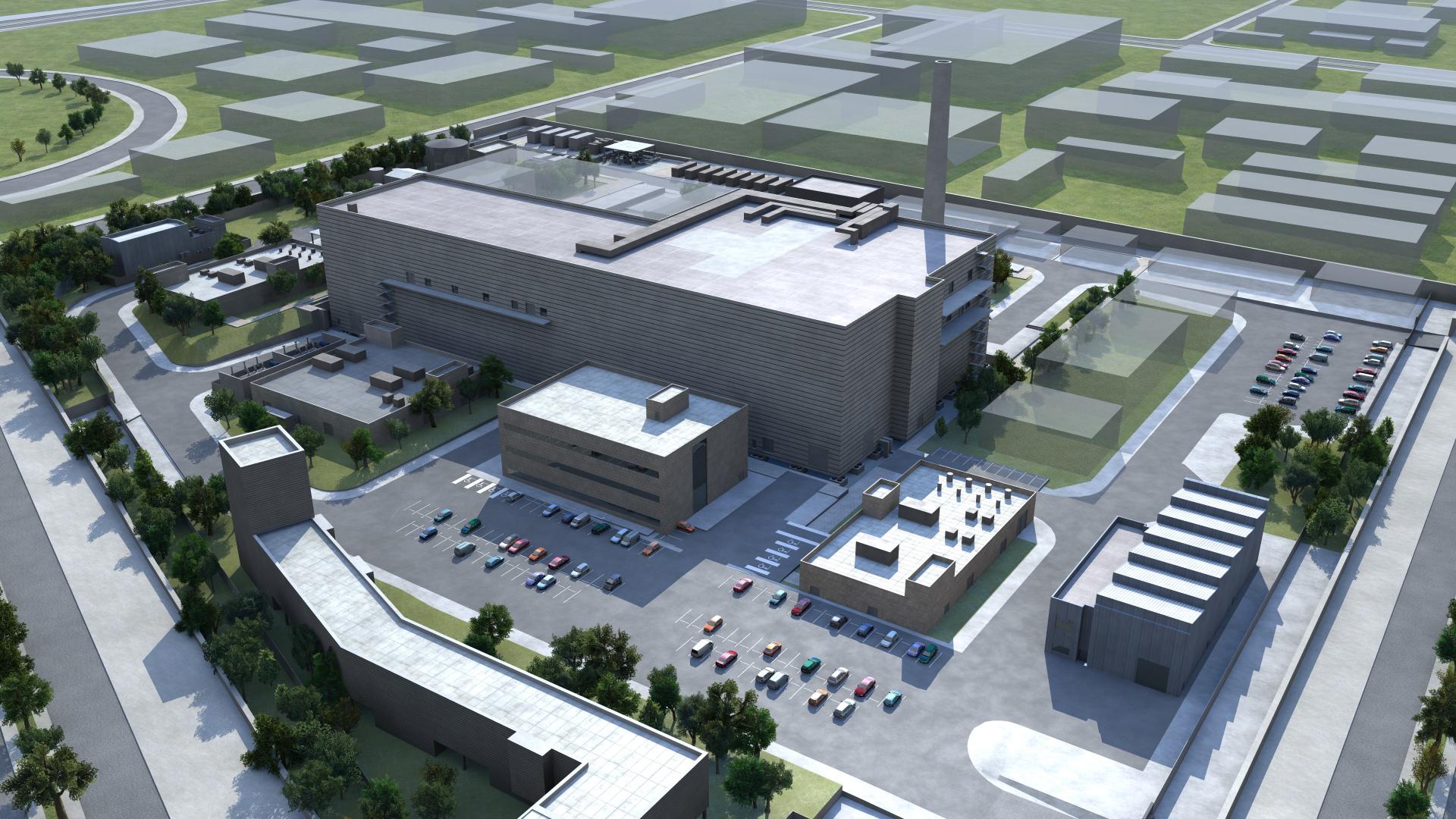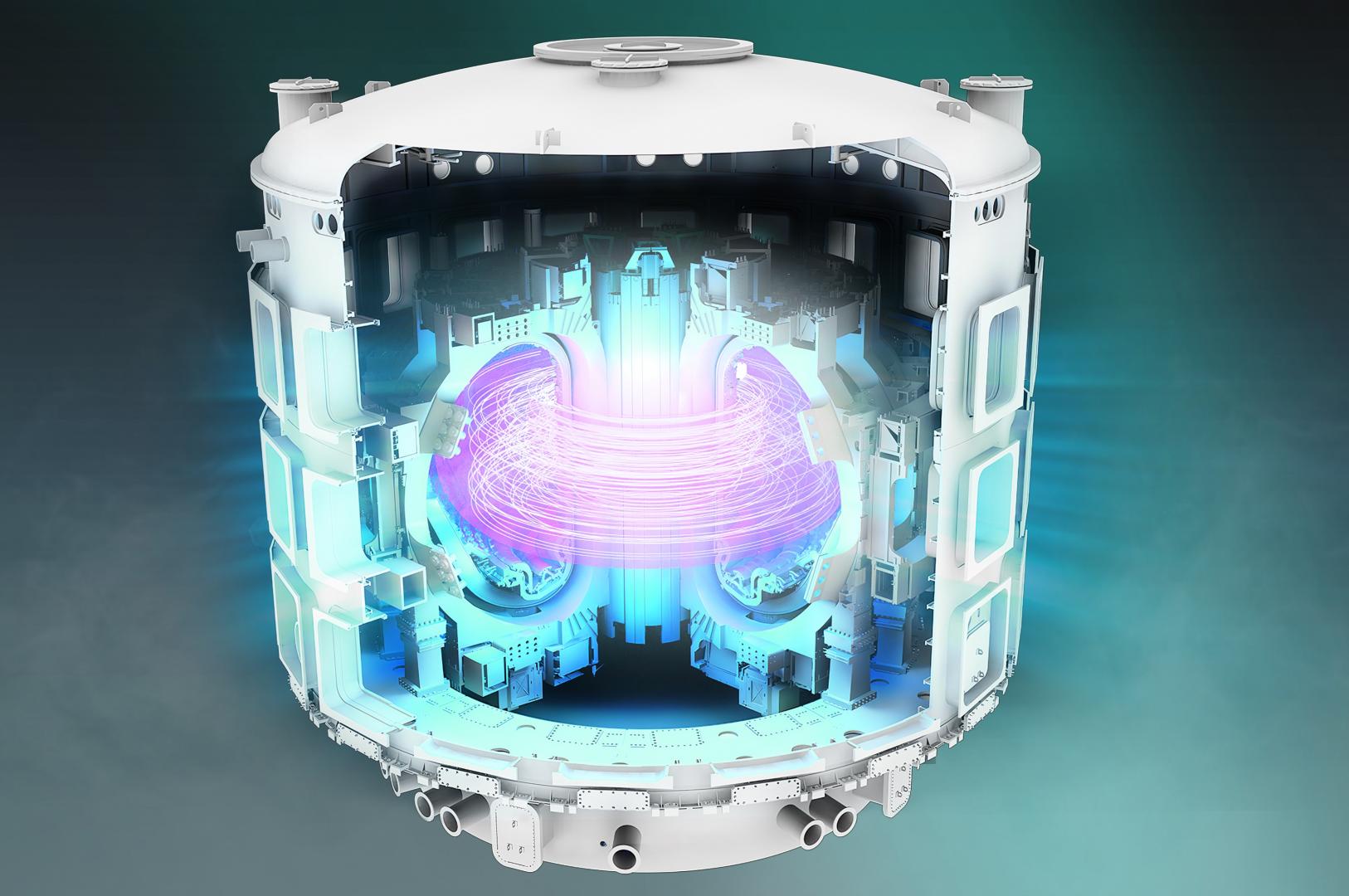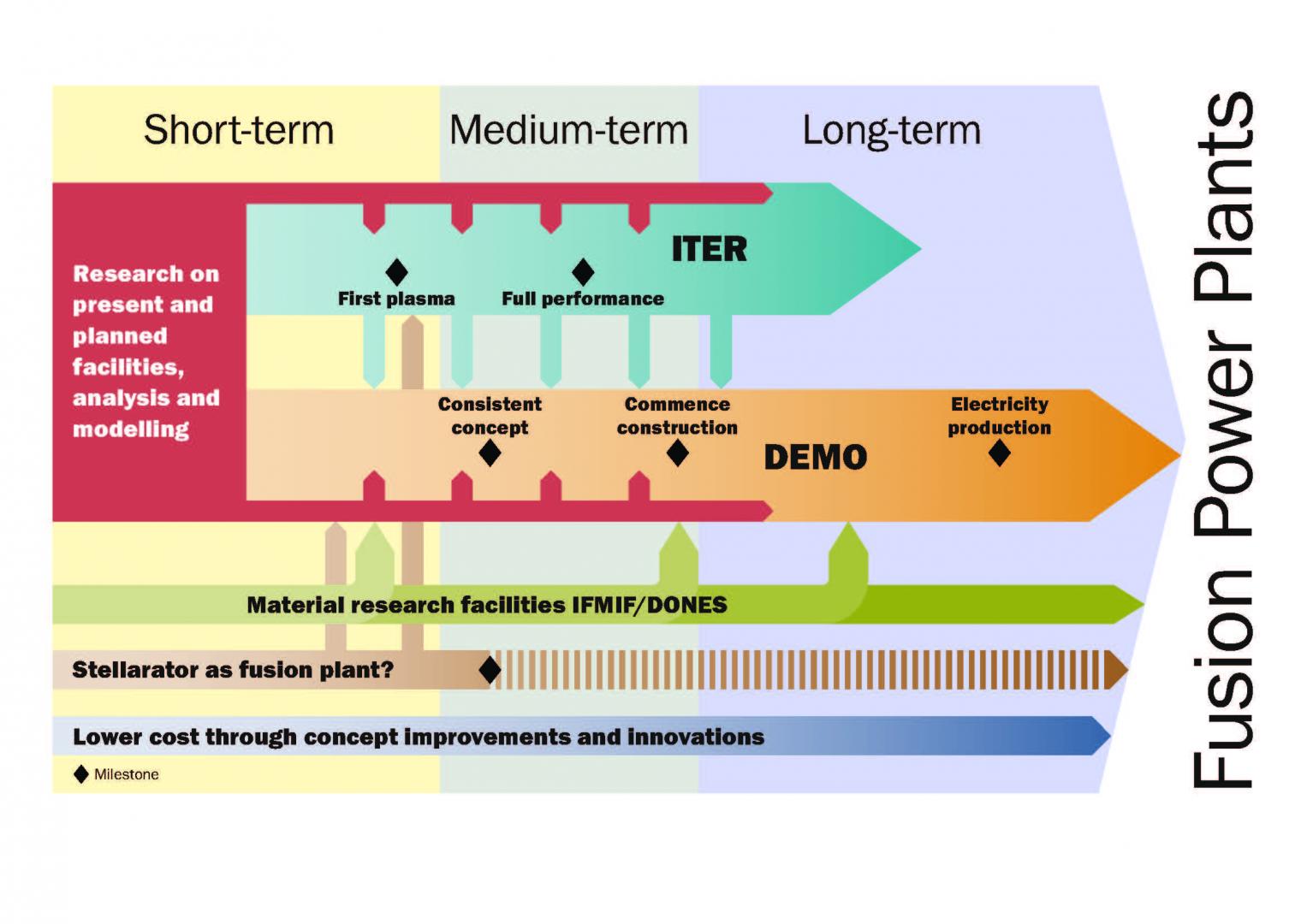The CDTI Innovation continues to further training and leadership of the spanish industry in fusion energy
- The event IFMIF-DONES Design & Build, organized by the consortium IFMIF-DONES CDTI in collaboration with Innovation to spanish companies and entities, opportunities for recruitment in the coming tenders for the design and construction of buildings and systems and Plant engineering services of the international scientific IFMIF-DONES, which will offer great opportunities for spain in the field of merger
- The CDTI innovation is the focal point for spanish industry under merger in the major international science facilities actively promotes, for more than 30 years the development of the ecosystem english through financial instruments, and specialized support calls for industry and research centres

The next 24 may 2024, CDTI Innovation organizes, in collaboration with the consortiumIFMIF-DONESthe event,IFMIF-DONES Design & Buildin the presentation to spanish companies and entities, opportunities for recruitment in the coming tenders for the design and construction of buildings and systems and Plant engineering services of the international scientific IFMIF-DONES, which will offer great opportunities for spain in the field of fusion energy. In the meeting, shall identify the state of this unique infrastructure and will the different contracts frameworks that are to be launched in the coming months to the work of the buildings and systems of the plant, support to the contractor, implementation of security systems and establishment and maintenance of a management system for life cycle of the plant.
The race towards future fusion reactors continued at the global level. In recent years, we have witnessed the emergence of many start-ups and merge multiple initiatives sponsored by the great interest of private investment, which have apalancado over $6 billion in this energy. There have been technological milestones in the european programme of merger with different records and many countries are increasing their investment in technologies of merger and consolidate its positioning. European industry has a leading position in the development and construction of future fusion reactors, motivated in part by its commitment to assume the 45 per cent of the construction of the ITER project.
The CDTI Innovation has been, for more than 30 years, the industrial point of contact (ILO, for its acronyms in english) of the major international scientific infrastructure in which spain participates in the areas of particle physics, astronomy and fusion, putting intense accompanies businesses in their training to become a supplier of scientific infrastructure, industry support through financial aid granted to numerous projects that have been key to which enterprises can then be competitive in tenders for ITER and mobilization of the ecosystem through deployment of sectoral events, help in the formation of consortia, advice to companies in the submission of tenders and follow-up of contracts awarded to national entities.
In this context, the spanish industry is playing a leading role in recent decades, for his contribution and provision of equipment and of high-tech systems to the large infrastructure científico-tecnológicas Industry to the “ science ”, a very intensive sector r & D, primarily the exporter and with great potential for technology transfer and constant way between companies, universities, research centres and other innovative agents. Spain is a clear example of Successful collaboration público-privada and transfer of knowledge in the field of nuclear fusion. Overall, the cumulative return in Large Installations, since 2005 to spanish companies has represented about 2,000 million euros, and only in 2023, the return english in appointments has exceeded eur 146 million.
For the CDTI innovation, in his interest and support for innovative technologies, particularly in the area of energy efficient and profitable, fusion energy is a priority for their enormous advantages and benefits for science and technology and its socio-economic impact. Since 2007, has funded projects for more than 63 million euros in this area, by encouraging the creation of an ecosystem of companies, public research, technological centres and universities have made it possible to the training of the spanish industry in order to have access to contracts of ITER, DEMO or IFMIF-DONES and have been a key factor in positioning of leadership.
IFMIF-DONES spanish, the bet in the european roadmap merge
One of the large plants are now taking shape global technological as is the International Fusion Materials Irradiation Facility – Demo Oriented NEutron Source (IFMIF-DONES), research infrastructure in the world to test, validate and modification of the materials used in future power plants. In december 2017, Fusion for Energy (F4E) welcomed the joint proposal by Spain and croatia to locate the IFMIF-DONES in Escúzar (Granada). With an approximate cost between 600 and 700 million euros, this source of neutrons is one of the fundamental pillars of the fusion programme will provide an opportunity and industrial and technological, unprecedented, for the sector's companies of our country.
Spain will have to be very relevant part of the construction of this unique project, about 50% of its construction, and the spanish industry will benefit not only of this phase, but also of the operation and maintenance during the 25 years of life of IFMIF-DONES. It is expected to generate more than 50,000 jobs in our country, it is expected to 11,000 are centralized in Granada. Furthermore, the infrastructure will attract many companies and centres that will be installed headquarters and factories in the surroundings, producing an important economic activity in their environment.
IFMIF-DONES acts, moreover, as a pole of encouragement of the ecosystem, fostering collaboration público-privada, developing cutting-edge technologies and transfer. Today, and with the impetus of the different calls of the Missions of Innovation, the CDTI fomented ecosystem more than 30 companies Público-privados 14 centres and research, particularly the CIEMAT, and have mobilized around eur 35 million. The CDTI Innovation continues to progress further in its commitment to fusion energy and is also promoting, in the field of Public Procurement for the promotion of innovation from the public domain, new proceedings for the procurement of services of R & D and to the development of technological demostradores for IFMIF-DONES. At the same time, is moving in the deployment of agreements with public research centres as PRISMAC CERN and CIEMAT or for the development of technological and industrial capacities in the field of superconductors magnets.

Photo ceded by IFMIF-DONES. Simulation of the plant IFMIF-DONES
Fusion energy
The merger is the sun's energy and the stars. The light and high temperatures that renders the sun are the result of a fusion reaction produced in your kernel so that hydrogen, merged collide in Atoms heavier and helium release massive amounts of energy in the process. While the sun's gravitational force leads naturally the merger, to achieve this effect into the earth would require temperatures in excess of 100 million degrees Celsius and a very intense pressure to ensure that the deuterium and tritium is merged, as well as adequate to retain confinement plasma as a state in which such reactions.
All these challenges make scientists and engineers from all over the world continue to investigate new materials and designing new highly innovative technologies. Although the current experiments are usually very close to the necessary in a fusion reactor, is still necessary to improve the properties of confinement and the stability of blood for physical this process. For this reason, scientists and engineers from all over the world continue to test new materials and designing new technologies with a view to achieving this energy.
According to the physicist Stephen Hawking, fusion energy is the most promising technology to mankind and this explains why more than half of the world's population, which represents 80 per cent of gdp, is investing in the ITER project to achieve, by its many advantages, this old dream.
This type of energy will be sustainable, reliable, virtually unlimited, very effective and easily accessible by all countries. A significant aspect is that nuclear fusion without emitting carbon dioxide or other greenhouse gases into the atmosphere, which would help to mitigate the negative effects of climate change in the future. Some forecasts indicate that the merger could meet world energy needs for millions of years. To give an idea of the efficiency that it would reach the “ energy of the stars ”, the necessary amount of fuel in a merger to supply electricity for one year to a city of one million inhabitants, if a small truck of 60 kg, while it would take 400,000 tons of coal OR oil 250,000. In addition, the fuel needs would be easily accessible to any country: it would be deuterium that is obtained from the sea water and of lithium derived from marine salts or salt mines distributed around the globe.
Given the numerous potential of fusion energy for the technological and scientific Area, was introduced in 2007 site in Cadarache (France) the International Thermonuclear Experimental Reactor ” (ITER), the largest global installation melting whose goal is to demonstrate that is scientifically and technologically feasible to produce this type of energy on earth. In this international macroproyecto involved 35 nations, who work together to build the New Tokamak largest in the world, a magnetic fusion which has been designed to demonstrate the viability of the merger as a source of large-scale energy based on the same principle that supports our Sun and stars.
Spain, second country in recruitment and ITER F4E
Spain took second place, after France, in the ranking of recruitment by european countries both in F4E as in ITER Organisation (OIS). This position remains, even if it excludes civil contract. This is even more relevant if it considers that the spanish companies are competing in a very competitive market without guaranteed return rules. Since 2008, spanish companies have captured over 650 contracts for the ITER project, numbering over 1,468 million euros.
Spanish companies have reached a very significant participation in the construction of ITER, the allocation of more than 650 contracts. In this project, it should be noted, for its technological importance, the participation of spanish companies in the provision of the imams superconductive. In particular, spain has contributed in the manufacture of reels toroidales and led the contract of the tools reels poloidales. Spanish companies have also been contracting contracts with very important in the manufacture of different components of EPIC (Megavolt ITER Injector and Concept Advancement), a prototype to scale of the nozzle of neutrons in ITER will be used to heat the blood and other systems of heating of blood and Upper Launchers.
In technologies of materials, contracts awarded for the manufacture of the number of the First Wall or pieces that are in contact with blood and will act as a first barrier, protecting the vacuum chamber are also very relevant contracts obtained for the manufacture of the house of assembly and, as well as other in diagnostics, instrumentation and process control, assembly of the reactor, supported by alignment and metrology and assembly of the New Tokamak. Very significant has been their contribution to the civil work of this New Tokamak.

Photo ceded by ITER new Tokamak Image.
Spain has unique infrastructures in merger already built, as the stellarator TJ-II CIEMAT, where the domestic industry received over 70 per cent of the construction, which have served to spanish companies acquiring references to participate in ITER and have contributed significantly to this leadership position of our industry.
The future prospects in terms of opportunities for spanish business capabilities are strong. In the case of F4E, the spanish industry will compete to participate in the neutral injector nevertheless, in the systems of global warming, in the plasma crioplanta, internal components to the jar test useful modules as well as other support contracts of engineering. With regard to the civil works, will begin phase II with important contracts, among whom Hot Cell. For its part, with regard to ITER, in the coming years it is hoped the award of large contracts for assembling and maintenance and spain will be in the development of mechanical components, systems of detritiación, control, diagnostics and monitoring systems and New Tokamak, especially in construction of the “ hot cell ” of ITER is valued at more than a billion euros.
A DEMO Of ITER, the prototype of fusion reactor
In parallel to the construction of ITER, provides for the design of key technologies for DEMO, a prototype fusion reactor to be created to show that controlled nuclear fusion can deliver energy to the network. Its aim is to develop and test technologies to operate a fusion reactor not as a scientific experiment, but as a power plant. With the transition from a DEMO the ITER fusion being transformed from a laboratory exercise led to a science programme promoted by industry and technology. The location of DEMO is still undecided and would shortly be hoped that the countries concerned to host this infrastructure to submit their expressions of interest.
Heavy investments made by non-european countries in the great fusion and leverage private financing that is taking place may put at risk that leadership tecnológico-científico of europe and makes it necessary to establish a strategy to strengthen its position in the current picture and to ensure a supply chain for the future european fusion reactors. In this context, there is the initiative público-privada DPI (Public Private Partnership) which aims to launch the european commission to speed up the european road map. The technologies that will be developed in this framework will be involving nuclear materials (breeding blankets and advanced materials structural) technologies, remote tritium, manipulation, magnets HTS, methods and technologies of cooling stellarator, among others.

Photo ceded by EUROfusion. Roadmap european merger